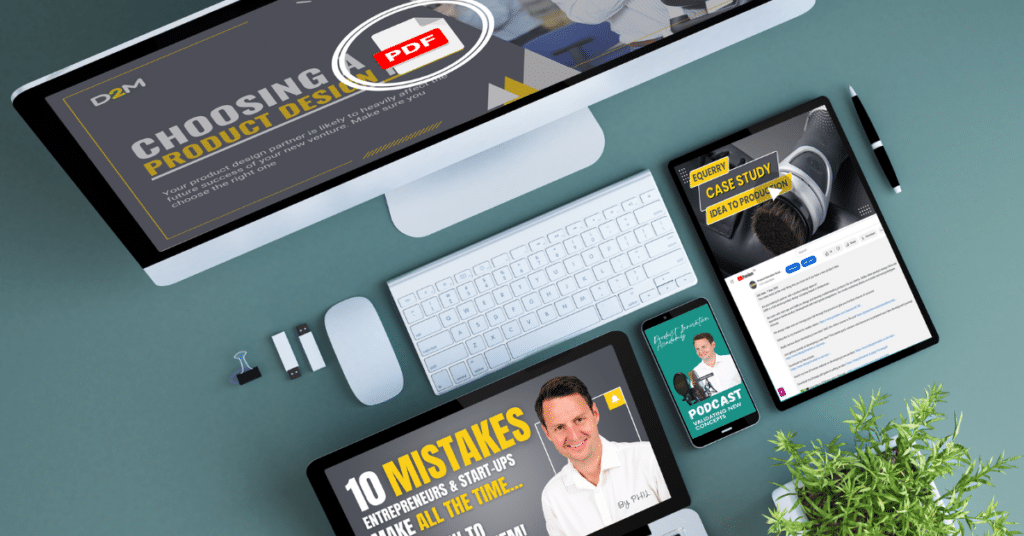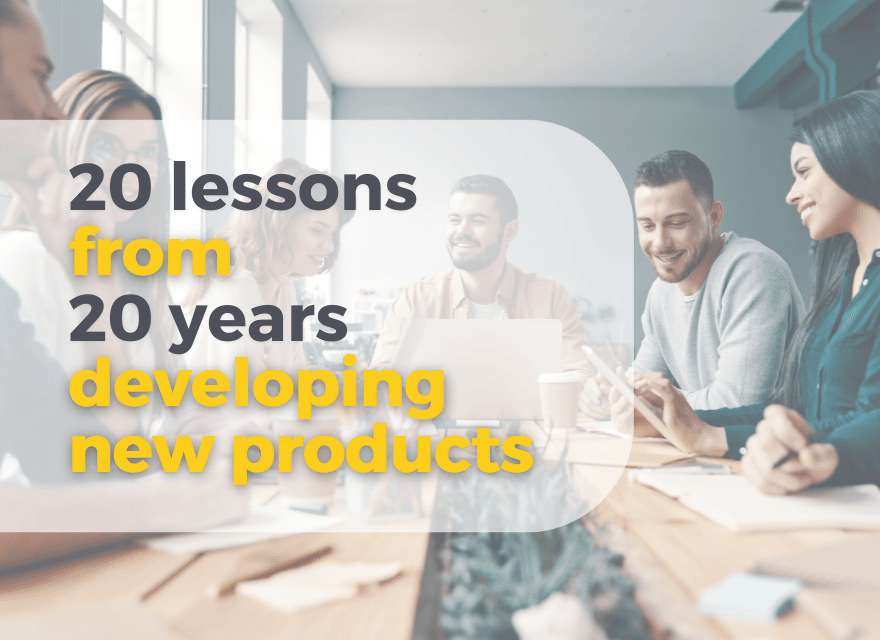20 Lessons From 20 Years in Product Development
Product design is a vital part of product development and not only does it make things easier for your business in the long run, it also ensures that you can make iterations and further changes to your product before committing to the expense of production setup. Here are 20 lessons I’ve learnt over the years that are absolutely vital for product development:
1. Make sure that your idea solves a high intensity or high frequency problem
If you want to create a successful product, make sure that your idea solves a high-intensity or high-frequency problem. This is an important factor to consider for product development and can help you identify which problems are worth solving and how best to solve them. The best products are those that solve a high intensity or high frequency problem as it can help you create something that people actually want to use.
If you’re not solving a problem that your customers are struggling with, then they won’t need your product–or at least not enough of it. It’s also important to note that if you’re solving a problem that isn’t being addressed by other companies in the market, then you’ll have an edge on them when it comes time for marketing and sales. A high-intensity problem is one that affects a small number of people but results in a serious outcome. For example, if you have an idea for rescuing disabled people from burning buildings more quickly, it is not a common problem but is high intensity (it’s life or death) when it does occur.
A high-frequency problem is one that affects many people but doesn’t cause them that much pain or inconvenience. For example, if you were developing a new kind of mobile phone that had more memory and faster internet speeds than any other phone on the market today, this would be considered a high-frequency problem because there are plenty of people who already have phones with similar specs but don’t want them anymore because they run out of memory or can’t stream videos fast enough.
2. Make sure the timing is right for your product.
Timing is everything. You need to ensure that the timing is right for your product launch, and this can be another key factor in product development. The best time to launch a new product is when there’s a demand for it and people are ready to buy. This means that you need to make sure your product is something people want and need, but also that there’s an opportunity for growth once it hits the market.
You should also consider the market’s current state. What are its trends? How has it changed over time? What areas of focus do customers have? These are all questions you can ask yourself before deciding on whether now is the right time for launching your new product.
3. Design a minimum viable product
Design a minimum viable product because it helps you minimise risks by reducing development costs and because it quicker to launch, it gives you a better understanding of your customers. It is another key factor to consider for product development.
The minimum viable product (MVP) is a design approach used to minimise risk and cost when launching a new product. It’s also a popular way to get a better understanding of your customers, because you can test-drive the functionality of your product before investing too much money in it.
The term “minimum” in MVP refers to the fact that you don’t want to spend all your time developing something that isn’t going to work well enough to be useful or sellable. The word “viable” refers to how useful and sellable the product will be once it’s finished–that is, you want it to be built so that it meets certain standards for quality and performance.
An MVP usually includes just enough features for potential users to see what they like about your idea for a new product or service, but not so many features that they’ll feel overwhelmed or confused by what they’re seeing. This helps you identify which parts of your product are most important and should be given priority over other parts at this early stage of development; then you can focus on those things during future phases of development until everything comes together nicely later on down the line.
When you design a minimum viable product, you are trying to reduce the risk of failure by not making any changes that might cause you to lose money or time. You can also do this by minimizing the amount of time needed for development, which will save money on resources such as staff or materials.
By having a clear vision of what kind of product you want to create and why it needs to exist, you can start building something that will work for your customers’ needs rather than just trying to make something work at all costs regardless of whether or not it’s useful or fun.
4. Develop, test and confirm your key marketing message
Marketing messages are often too complex, aren’t memorable enough or aren’t clear. It’s a lot easier to develop your product if you know what your marketing message will be.
The best way to develop and test your key marketing message is to start with the target market. Who are they? What do they want? What do they think of you? Who are their competitors? How can you make them think differently about what you offer? These questions will help you come up with an effective marketing message that speaks directly to their needs and concerns.
When you’re developing, testing and confirming your key marketing message with your target market as early as possible in the process, you’ll be able to make sure that your product is something that people will actually want to buy.
Your marketing message should be concise and memorable. It should also be clear–so that when people see it, they know exactly what it means. If your message isn’t clear, then it’s going to be hard for people to remember it later on down the line when they see your product or service advertised somewhere else.
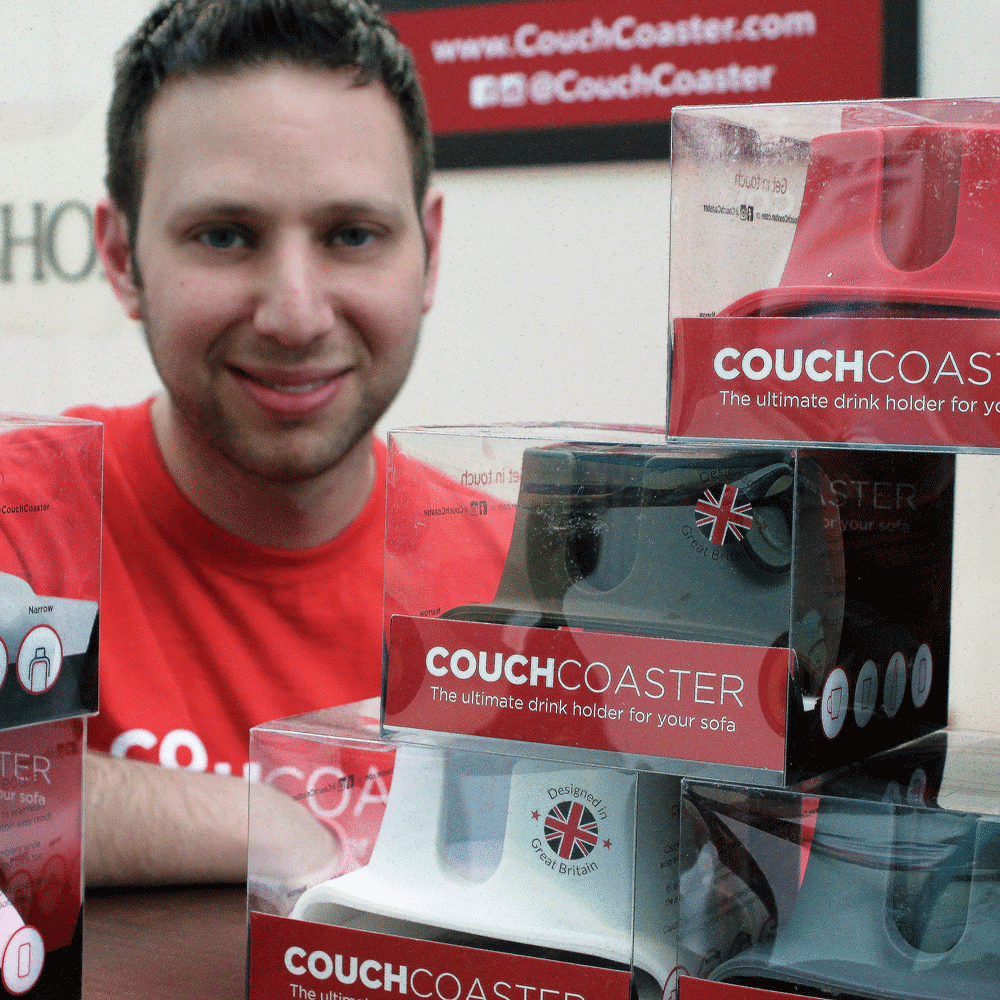

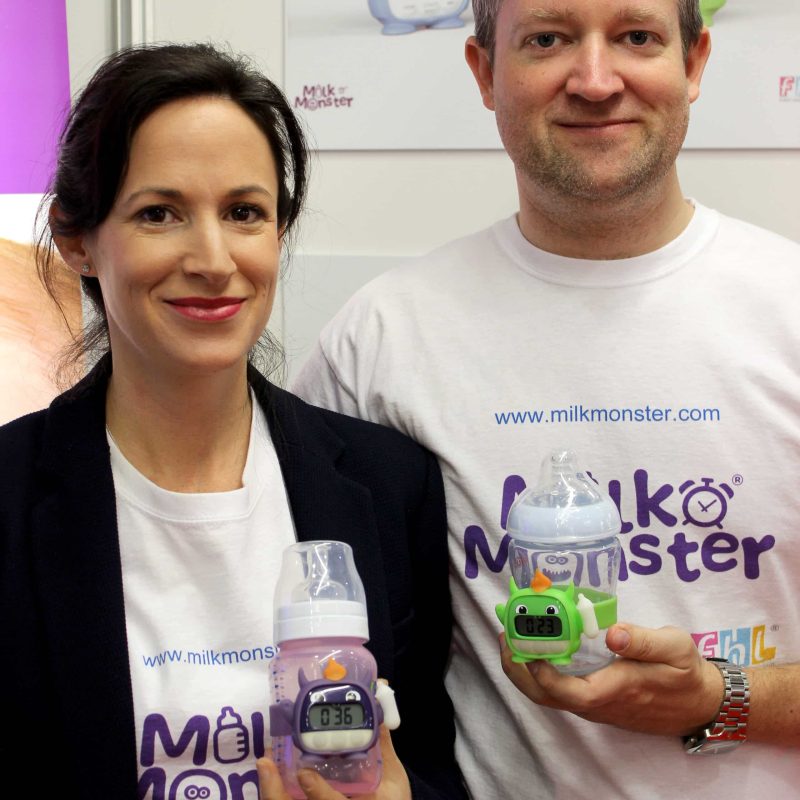

5. Ask your target market if they would pay more for your product
When you’re trying to figure out how much your product should cost, it can be tough. You want to make sure you’re charging enough so that people will buy it, but if they’re too expensive, they might not even try it. So how do you know what the right price is?
The secret to getting paid more is asking your target market if they would pay more for your product. It’s only when it comes to money that people will give you their REAL answer. So, go forward with an open-minded question.
This is a question that you should ask your target market. I know, I know–it’s not a fun question to ask. But it’s the only way you can get the real answer: what they would pay more for? Its one of the most important things you can do when it comes to marketing. The answer will be different depending on who you’re asking and what they’re interested in. But one thing is true: no matter what, they will give you their REAL answer. And if you ask them in a way that makes them feel comfortable with sharing their thoughts, they’ll do it without thinking twice (or even one).
6. Don’t be greedy with your margins initially
When it comes to setting your price, don’t be greedy. Your first batch of product will always be more expensive to create as it’s a small batch with higher unit cost. But it’s critical to get reach in the market and that’s easier at a lower price. Also, you have no brand or customer reviews at this early point in your business life so if you set too high a price now, you could lose out on some customers who may have been interested in buying from you if they knew what they were getting into!
I’ve been asked a lot lately about how to set prices for my first product. I’ve heard from people that they want to make sure they’re pricing their products high enough to cover their costs, but at the same time, they don’t want to get greedy and put themselves out of business.
The truth is that you can’t be greedy with your margins initially. So, be comfortable with setting low price at first. Once you’ve got some customers who love your product and are willing to pay more than what it costs you to make them, then you can start increasing prices and taking advantage of economies of scale–but only if the demand is there!
7. Don’t trust suppliers and manufacturers
Don’t trust suppliers, manufacturers, marketing agencies, sales agents or distributors to do what they say they will do. Make a contract it and get it in writing. The fact is that the people who are supposed to be working for you are often just looking for ways to take advantage of you. They may be dishonest about their intentions and actions, or they may be just plain lazy.
In either case, if you don’t have a written contract between yourself and each party involved in your business relationship then there’s no way to hold them accountable for what they do or don’t do. A written contract will help ensure that all parties know exactly what they’re getting into when they enter into a relationship with your company–and it can also help protect you from being taken advantage of by someone who is looking for an easy way out of their obligations under the law (or under any other rule).
8. Is your product in a growing market – a rising tide floats all boats
Is your product in a growing market? There is a saying that a rising tide lifts all boats. Take advantage of this while developing your product. When you’re developing a new product, it’s important to understand how your market is changing. When you do, you’ll be able to make informed decisions about what features are most important for your customers and how they want to use your product.
If you’re developing a new product, be sure to take the time to understand what is going on around you. Are there any major trends happening in the industry that could affect how people will use your product? Is there a company out there who is already doing what you want to do but better than you? If so, don’t waste time trying to compete with them–you’ll just end up falling behind. Instead, figure out ways to add value to their offerings and get ahead of them before they can even realize it!
However, if you’re in a growing market, then your product will have more room to grow as well! You’ll have more opportunities for growth because there are more people who want what you have on offer than there were before. If you’re not sure whether or not your product is in a growing market, start by looking at how many people are searching for it on Google, how many of them are buying it, and what they’re buying it for. If those numbers are rising, then there’s no doubt that this is an opportunity for growth.
9. Charge less than branded competitor products initially
When you’re just starting out, it can be tempting to charge more than your competitors. After all, you’re going to be building a brand and making a name for yourself, so why not make sure that your products are as good as they can be?
But there’s something to be said for charging less than your competitors at first. It gives you a kind of leverage to build upon, because if people like what they see in your product and want more of it, they’ll pay more for it when they get it. The more time and effort you put into your business and its products, the better they will become–and the more people will trust what you’re selling.
One thing to consider is how many sales you can make per dollar spent. If you’re able to make more than 10% profit on each customer, then it’s safe (and smart) to start charging more than your competitors. But if you only make 5%, then it’s OKAY to start charging less in order to grow your business.
Also, when you charge less than your competitors, you have more room for growth and can build upon what you already have. You can also attract new customers who are willing to pay more because they know that they’re getting something better than what the other guys are offering.
10. Don’t borrow money for your start-up.
It’s tempting to borrow money to start a business. After all, you need to get started and you don’t have any income coming in yet.
But if you borrow money for your start-up, it can be disastrous for your business. Repaying loans at a time when your startup needs every penny it can get will cripple the company before it even takes off. This will also deter future investors from investing in the company–and if they don’t see any potential for growth or profit, why would they give you any more money? They’ll likely be turned off by the fact that they’ll never see a return on their investment.
Borrowing money for your startup isn’t necessarily bad–it can be helpful for getting a business started and keeping it going when you don’t have enough capital to pay all of your bills. However, repaying loans at a time when your startup needs every help it can get can also deter future investors from investing in your company.
And if an investor doesn’t invest, they might not be interested in helping out in any way after that either–which means no help with future funding or advice about how best to run things. Instead of borrowing money (or trying to get investors), come up with a plan for how much money you need and then go find ways to make sure you have that amount available every month. Borrowing money can be a great way to get things off the ground, but beware that it can be a trap that keeps your business from growing and getting the funding you need.
11. Get your product price right
When it comes to selling your product, you want to make sure you’re pricing it right. The right pricing attracts the right buyers. But this does not mean you should compete on price. You want to attract buyers who will be satisfied with your product, so it’s important that you’re able to offer them a good deal on an item they’ll love. If your business model is based on selling a service or product at a low price, then maybe it’s time for a change in strategy.
The first thing to remember is that you need to be realistic about what your target market will pay for your product or service, and how much they’re willing to spend on it. If you’re pricing too high, then you’ll likely end up with only a few customers who are willing to pay those prices–and those customers may be the ones who are willing to pay more than average.
In addition, if you set your pricing too low, then it could make people think that your product or service is cheap or even worthless–which could end up hurting sales in the long run. Getting your product price right is a matter of knowing what you want to sell, and then finding the right balance between price and value.
But how do you know which buyers are worth selling to at that price? The answer is simple: test it out! You can use your own products as well as those from competitors’ websites and stores to test different prices and see which one gets more sales. Once you’ve found the perfect price point for your product, start selling!
12. Make sure that you are very focused on your cost price
It’s important to remember that your cost price is only one part of the equation when it comes to determining the right selling price.
You need to be focused on your cost price. The cost price allows you to set the right selling price. To make sure that you are very focused on your cost price, ask yourself if the product is worth what you are charging for it. If it is not, then you need to lower your cost price. If this is not possible, then try to find ways to make your product more attractive by changing packaging and adding a few accessories that will attract customers’ attention so they will pay more for these items than they would have paid if they bought something else instead of your product.
The cost price is the minimum amount of money that a product costs to make. This number should be high enough for you to cover all expenses, but not so high that it prevents you from being profitable.
If you do not know how much it costs to manufacture your product, then find out before setting your retail price. If it turns out that the manufacturing cost is higher than expected, then adjust your retail price accordingly. In this way, you will be able to make sure that you are earning enough money from each sale without having to sell at a loss!
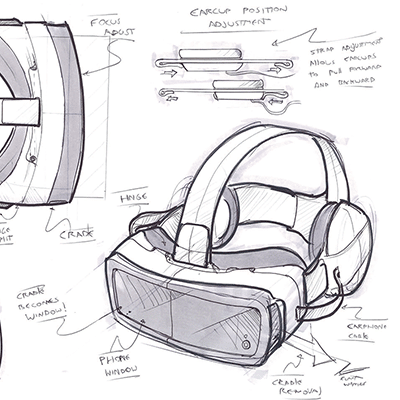
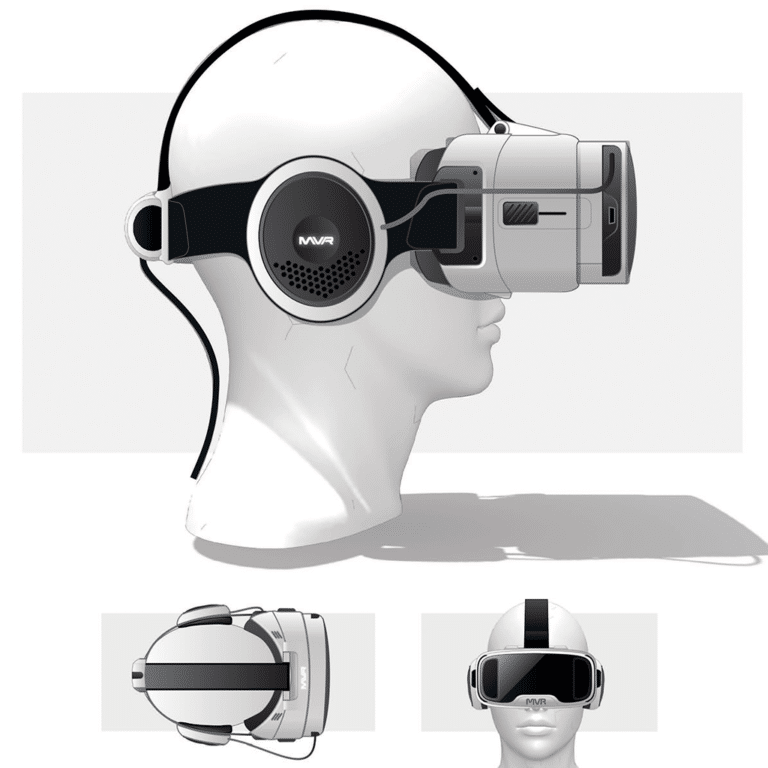


13. Don’t underestimate what it takes to be involved with a major retailer
You might think that being involved with a major retailer would be easy, but it’s probably not. You have to know how to work with a team and be willing to do what it takes for your brand to succeed. Are you thinking about joining a major retailer? It could be the game changer.
To be big in the game, you need to be involved with a major retailer. If you’re not already involved with a major retailer, you should start small. You can’t underestimate what it takes to be involved with a major retailer. You don’t have to be the CEO of your own company or even have a lot of money—assuming you have any at all—but you do have to have some sort of influence. That might be as simple as being in contact with a retail that’s well connected and will help get your product out there.
The important thing is that if there’s a retail out there that can provide you much value and influence, and makes you feel like you’re making a difference, then get involved! When you’re thinking about being involved with a major retailer, don’t underestimate what it takes.
For example, you might assume that just because you work with a company, you already know how to do it; but actually, the degree to which you can participate in the retail environment is different for each industry. So even if you’ve been working with them for years and want to move up into managing things yourself, there are still things that will be new and challenging for you—and maybe make you feel like a complete rookie!
What does this mean? For example, consider how much time it takes to become familiar with all of their business processes and procedures. It’s not just about learning the product lines or brands: there’s also things like how they track inventory levels in stores (and if they have locations overseas), how they handle returns and exchanges (if they offer them), and so on. This kind of knowledge is never really present in an online course or book—it’s something that comes from experience. And when it comes down to it, it’s not just about knowing all this stuff: it’s also about applying what you learn every day on the job.
14. Present your idea effectively
The best way to present your idea effectively is by thinking about the person you are presenting to and then highlighting to them the benefits of your product. When you think about who you are talking to, what they want and how they feel, you will be able to present your idea in a way that resonates with them.
Presenting your idea to someone means you’re asking for their trust and commitment. That’s why it’s so important to make them feel like they are in control of the situation and that you are being honest with them. One way to do this is by focusing on their needs, explaining how your product can solve those needs, and highlighting what will be gained from using your product.
Have you ever been in a conversation with someone and you’re trying to convince them of your idea? And they say, “That sounds great, but what’s in it for me?” I get it. I really do. It’s hard to remember that the person you’re speaking with—the listener—wants something out of the process as much as you do. They want to know: What will this mean for me? How does this make my life better? But how do we convince others of our ideas without coming across like we’re trying too hard? If you’re presenting your idea to someone, here’s what you need to do:
• Think about the person you’re talking to and their needs/wants in order to make sure the presentation is tailored for them.
• Highlight the benefits of your product or service for the person you’re presenting to (and include some compelling reasons why they should buy from you).
15. Chose the right product development partner
Getting the right product development partner can make all the difference. It’s time to start making your product happen! But if you’re like most people, you’ve got a ton of questions about what it takes to get from idea to market. And here’s the thing: you don’t have to do everything yourself.
Choosing the right product development partner can be a challenge. There are many questions that you need to ask before you can make your decision.
• Have they designed such product in the past?
• Do they have the expertise and experience?
• Are they part of a team who can input into the team?
• Is the designer familiar with your business and industry?
You will want to find out if they understand your business and industry, because this will help them to create better products for you. It is important that you get on well with your designer, because it will help them understand how you want your product to look and feel.
We know that a lot of people think that they have to have their own idea, design their own products, and develop their own marketing strategies. But here’s the truth: in this day and age, there are so many companies out there who can help you with all of those things—and more!
One thing we’ve learned over the years is that there are two kinds of companies out there: big companies who have big teams and small companies who just do one thing really well. And while big companies might be able to handle more complex projects than small ones (they might be able to develop a new product line or design an entire new website), it’s often better for your business if you work with smaller companies because they tend to be more responsive and flexible when it comes down to actually getting your project done on time. If you go with a larger company, chances are someone else will need time off for vacation or sick days or family emergencies—and then what will happen? Your project will get delayed even.
16. Make sure that your product has an eye-catching aesthetic, a USP and can be sold for less than your branded competitors.
Your product is the most important thing you can put into your business, because it’s what people will use. It’s how they’ll interact with your brand. If you’re not sure how, ensure it has an eye-catching aesthetic, a USP and can be sold for less than your branded competitors. Here are some things to keep in mind:
• Know what makes your product unique. If people don’t know about it yet, then there’s no point in launching it.
• Be clear about what makes your product different from everyone else who already sells similar products on the market (or doesn’t offer anything at all). You need something that makes people say “I need that!” or “I have never seen anything like this before!”
• Make sure that whatever it is–whether it’s a feature or a design element–is something that will stand out against other similar products on the market. When you’re looking to launch a new product, one of the most important things is to make sure that it has an eye-catching aesthetic, a USP and can be sold for less than your branded competitors. If you can’t achieve all three than consider not taking it forwards.

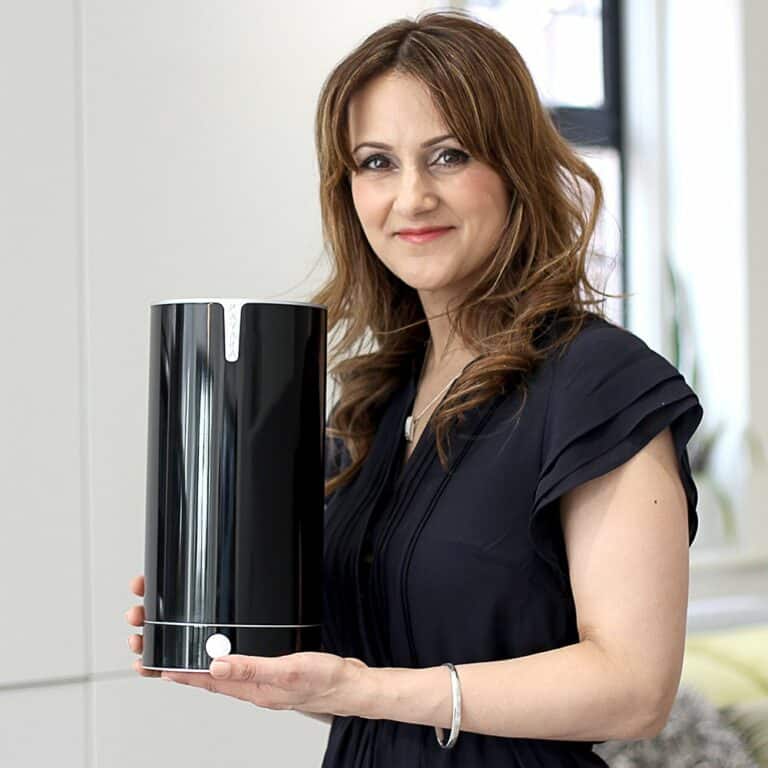


17. Fail early. Spend more time validating the concept.
Fail early. Spend more time validating the concept. This is better than wasting time and money only to find out later. You’re not going to get it right the first time, so don’t worry about being perfect. Just focus on doing something, even if it’s not perfect yet–and then keep working on it until you are! Don’t let yourself get caught up in the excitement of something new, because if it doesn’t work out, you’ll have wasted all that time and money. If you’re not failing early, you’re not learning fast enough.
It’s easy to get caught up in the excitement of building a new product or service, but it’s important to remember that you can’t build a product without first testing it out with real users. The process of validating your idea is crucial–and it doesn’t have to be expensive or difficult!
You can start by talking to your friends and family members about what they think of your idea and how they might use it. You might even ask them if they’d be willing to try out some beta versions of the app or program before release day! If anyone says no, don’t worry! Just keep trying until you find someone who will at least give it a shot.
Once you’ve got a good group of testers on board, start sending them link after link until they finally click through (and then thank them for their time). Then ask them what worked best about each link so that you can improve future iterations based on feedback from users who actually know what works best for them!
You don’t want to waste time and money on something without knowing if it will work, right? This is better than wasting time and money only to find out later that your concept is flawed. Carefully go through the process so that when it comes time to launch, you can be confident that everyone will love what you’ve created.
18. Take the first step
The first step to making your idea a reality is taking it off the drawing board. You might think that if you just get started, everything will come together in the end–but what happens when you’re not sure if your idea is going to work out? What if it’s just too big of a risk? What if no one else wants to join forces with you?
If you don’t take that first step, then all those questions will remain unanswered and your dream will stay on the drawing board forever. So, what are we saying? If there’s something that you want to do, then go do it! You can’t let fear hold back from the possibility of success.
You know what they say: “If you’re not moving forward, you’re moving backwards.” But sometimes we’re so afraid to try something new that we make excuses and procrastinate. We tell ourselves that it’s too hard and there’s no way we can do it. But if you want to succeed in business, then you have to take the first step. Your idea will never succeed if it stays on the drawing board–you have to put yourself out there! So, what are you waiting for?
19. Don’t get conned by a product design company.
A cost-effective design company is what you should look out for, not some fancy design that won’t work or is feasible. If you want to make sure your product will be successful, it’s important to think about the following:
• The cost of the design
• The time it takes to develop the product and bring it to market
• The time it takes to get feedback from customers on their experience using the product.
But what does it mean for a design company to be cost effective? It means they are able to deliver the best product design possible within your budget and timeline. They don’t have to worry about whether or not their designs will work because they know that if they do, the client will be happy with the results.
So how do you find out if a design company is cost effective or not? You ask around! Talk to other people who have worked with them before; see what kind of feedback they provide; look at their portfolio; talk with their employees–if there are any! And then make sure they’re working on projects similar to yours so that they can give good advice about what works best in your situation (and vice versa).
When it comes to product design, you have to be careful. There are so many companies out there that promise the world and deliver nothing but frustration. The first thing you need to do is ask yourself: “Why am I designing this?” If it’s just because the designer has a lot of ideas and wants to show off their skills, then there is no point in hiring them because they will end up wasting your time and money.
It’s also important to make sure that the designer knows what they are doing before they start working on your project. This means looking out for those that know how to make something functional instead of just pretty or cool looking (which will often get thrown out anyway).
20. Sort out your route to market early
With the rise of e-commerce, it’s easy to get caught up in the idea that you can start selling your product right away. But if you want to be successful in this new world, you need an effective strategy.
The best way to do this is by developing a brilliant strategy that will take you from idea to having a market share in the industry. Are you selling it through retails, going via the distributors route or delivering to your customers directly?
If you’re not sure where to start, we recommend starting with this simple exercise: write down all the ways that people can get their hands on your product or service. Don’t just think about the channels that already exist; think about all the ways people could get their hands on what you’ve created–and how those channels might change over time as new technologies emerge. Once you’ve got this list in front of you, start thinking about which channels offer the best opportunities for growth and expansion. And then start building relationships with those companies!
Another way to figure out which option works best for you is by talking with potential customers and seeing what they have to say about their needs. You’ll also need to consider where they are located and how much time they have available for shopping–along with other factors such as price range and budget size. Once all these things are taken into consideration, then it’s time for some serious brainstorming!
Your route to market is the most important decision you’ll make when it comes to starting your business. It’s not just about finding a product or service that people want–it’s also about finding the right way to get it into their hands, which means knowing how to make it easy for them to buy! So, you’ve got to get it right.
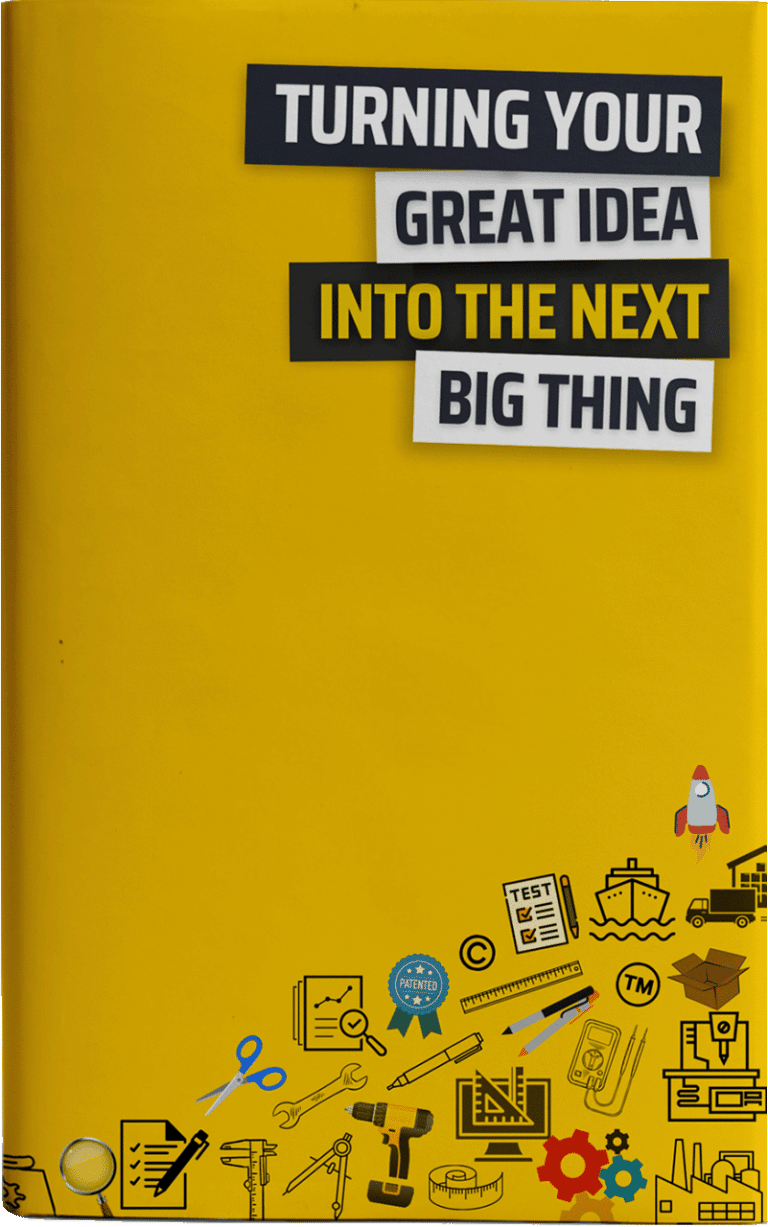
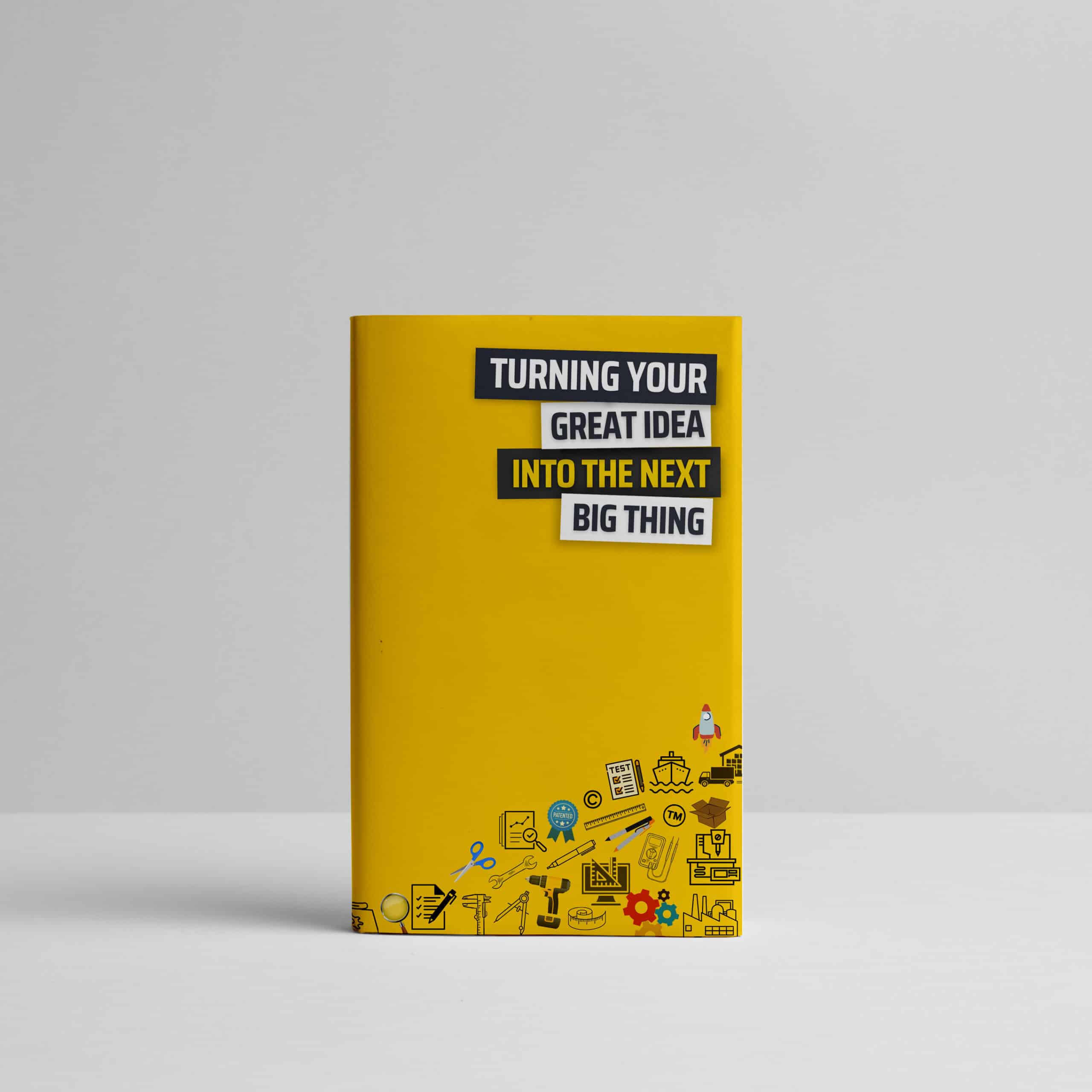
Serious about developing a product?
Having worked with hundreds of Start-Ups and SMEs we’ve learned a thing or so about getting a project off to the right start.
Don’t miss out on this invaluable guide to turning your idea into the next big thing!
